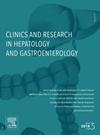基于机器学习的肝硬化危重患者短期死亡率预测模型的构建与验证。
IF 2.6
4区 医学
Q2 GASTROENTEROLOGY & HEPATOLOGY
Clinics and research in hepatology and gastroenterology
Pub Date : 2025-01-01
DOI:10.1016/j.clinre.2024.102507
引用次数: 0
摘要
目的:肝硬化危重患者多器官功能衰竭等并发症,预后较差。本研究旨在建立一种基于机器学习的预测模型,预测重症监护病房(ICU)重症肝硬化患者的短期死亡率,从而辅助临床干预和治疗决策。方法:使用MIMIC数据库中重症肝硬化患者的临床数据建立机器学习模型,并使用eICU数据库和青海大学附属医院(QUAH)的数据进行多中心验证。采用了各种机器学习模型,包括堆叠集成模型,并使用了SHAP方法来增强模型的可解释性。结果:通过内部和外部验证,叠加集成模型显示出优越的预测性能,AUC和AP值超过单个算法。内部验证集的AUC值为0.845,eICU外部验证集的AUC值为0.819,QUAH验证集的AUC值为0.761。此外,SHAP方法强调了关键的预后变量,如INR、胆红素和尿量。该模型最终被部署为一个基于网络的床边决策计算器。结论:该机器学习模型可有效预测ICU重症肝硬化患者短期死亡风险,具有较强的预测性能和通用性。该模型强大的可解释性及其作为基于网络的计算器的部署表明,它有潜力成为评估肝硬化患者预后的有价值工具。本文章由计算机程序翻译,如有差异,请以英文原文为准。
Construction and validation of a machine learning-based prediction model for short-term mortality in critically ill patients with liver cirrhosis
Objective
Critically ill patients with liver cirrhosis generally have a poor prognosis due to complications such as multiple organ failure. This study aims to develop a machine learning-based prediction model to forecast short-term mortality in critically ill cirrhotic patients in the intensive care unit (ICU), thereby assisting clinical decision-making for intervention and treatment.
Methods
Machine learning models were developed using clinical data from critically ill cirrhotic patients in the MIMIC database, with multicenter validation performed using data from the eICU database and Qinghai University Affiliated Hospital(QUAH). Various machine learning models, including a Stacking ensemble model, were employed, with the SHAP method used to enhance model interpretability.
Results
The Stacking ensemble model demonstrated superior predictive performance through internal and external validation, with AUC and AP values surpassing those of individual algorithms. The AUC values were 0.845 in the internal validation set, 0.819 in the eICU external validation, and 0.761 in the QUAH validation set. Additionally, the SHAP method highlighted key prognostic variables such as INR, bilirubin, and urine output. The model was ultimately deployed as a web-based calculator for bedside decision-making.
Conclusion
The machine learning model effectively predicts short-term mortality risk in critically ill cirrhotic patients in the ICU, showing strong predictive performance and generalizability. The model's robust interpretability and its deployment as a web-based calculator suggest its potential as a valuable tool for assessing the prognosis of cirrhotic patients.
求助全文
通过发布文献求助,成功后即可免费获取论文全文。
去求助
来源期刊

Clinics and research in hepatology and gastroenterology
GASTROENTEROLOGY & HEPATOLOGY-
CiteScore
4.30
自引率
3.70%
发文量
198
审稿时长
42 days
期刊介绍:
Clinics and Research in Hepatology and Gastroenterology publishes high-quality original research papers in the field of hepatology and gastroenterology. The editors put the accent on rapid communication of new research and clinical developments and so called "hot topic" issues. Following a clear Editorial line, besides original articles and case reports, each issue features editorials, commentaries and reviews. The journal encourages research and discussion between all those involved in the specialty on an international level. All articles are peer reviewed by international experts, the articles in press are online and indexed in the international databases (Current Contents, Pubmed, Scopus, Science Direct).
Clinics and Research in Hepatology and Gastroenterology is a subscription journal (with optional open access), which allows you to publish your research without any cost to you (unless you proactively chose the open access option). Your article will be available to all researchers around the globe whose institution has a subscription to the journal.
 求助内容:
求助内容: 应助结果提醒方式:
应助结果提醒方式:


